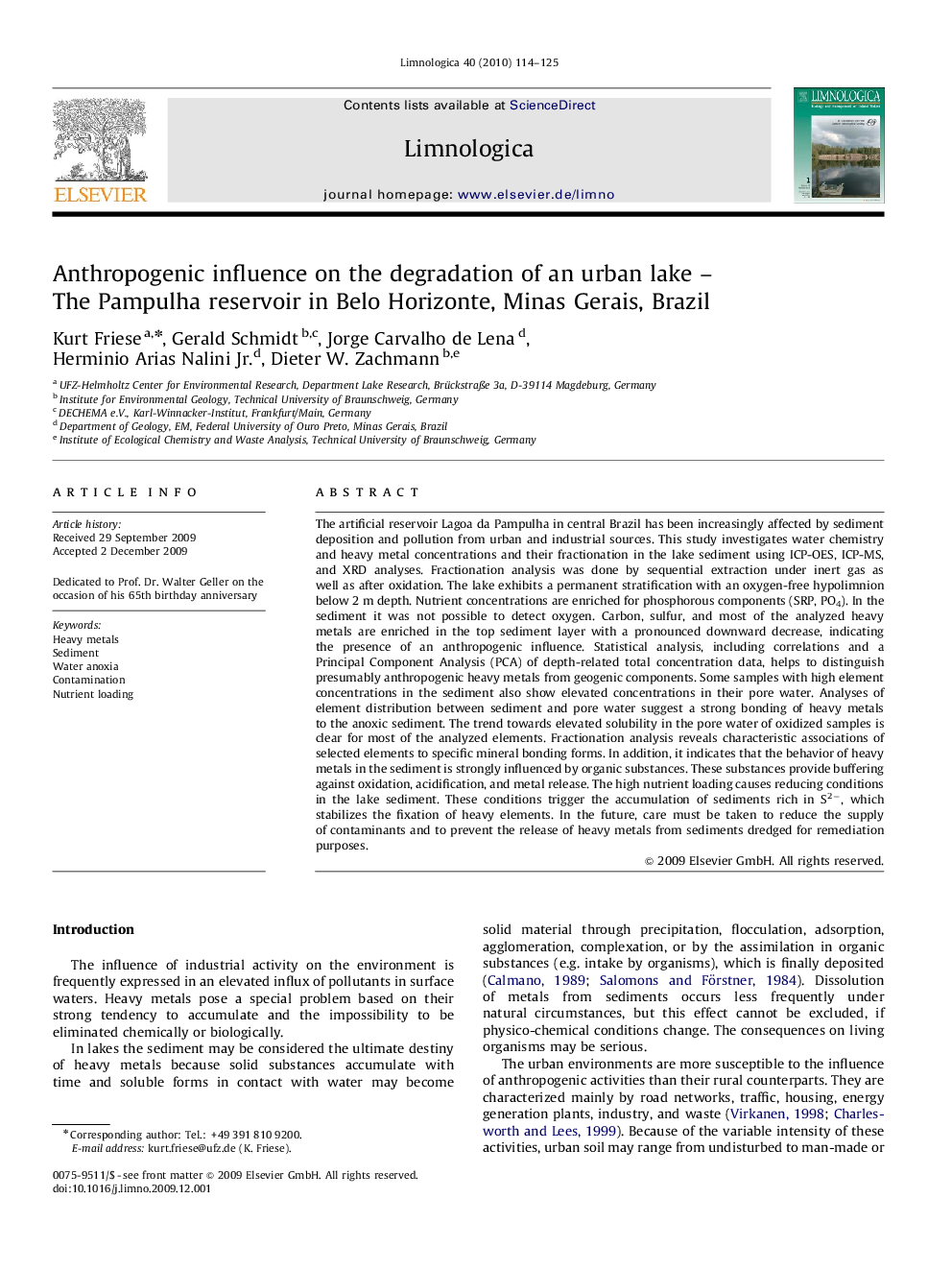| کد مقاله | کد نشریه | سال انتشار | مقاله انگلیسی | نسخه تمام متن |
|---|---|---|---|---|
| 4400588 | 1306979 | 2010 | 12 صفحه PDF | دانلود رایگان |

The artificial reservoir Lagoa da Pampulha in central Brazil has been increasingly affected by sediment deposition and pollution from urban and industrial sources. This study investigates water chemistry and heavy metal concentrations and their fractionation in the lake sediment using ICP-OES, ICP-MS, and XRD analyses. Fractionation analysis was done by sequential extraction under inert gas as well as after oxidation. The lake exhibits a permanent stratification with an oxygen-free hypolimnion below 2 m depth. Nutrient concentrations are enriched for phosphorous components (SRP, PO4). In the sediment it was not possible to detect oxygen. Carbon, sulfur, and most of the analyzed heavy metals are enriched in the top sediment layer with a pronounced downward decrease, indicating the presence of an anthropogenic influence. Statistical analysis, including correlations and a Principal Component Analysis (PCA) of depth-related total concentration data, helps to distinguish presumably anthropogenic heavy metals from geogenic components. Some samples with high element concentrations in the sediment also show elevated concentrations in their pore water. Analyses of element distribution between sediment and pore water suggest a strong bonding of heavy metals to the anoxic sediment. The trend towards elevated solubility in the pore water of oxidized samples is clear for most of the analyzed elements. Fractionation analysis reveals characteristic associations of selected elements to specific mineral bonding forms. In addition, it indicates that the behavior of heavy metals in the sediment is strongly influenced by organic substances. These substances provide buffering against oxidation, acidification, and metal release. The high nutrient loading causes reducing conditions in the lake sediment. These conditions trigger the accumulation of sediments rich in S2−, which stabilizes the fixation of heavy elements. In the future, care must be taken to reduce the supply of contaminants and to prevent the release of heavy metals from sediments dredged for remediation purposes.
Journal: Limnologica - Ecology and Management of Inland Waters - Volume 40, Issue 2, May 2010, Pages 114–125